
by Samantha Kennedy | Apr 25, 2019
As we get older, our risk of falling increases. In fact, falling once doubles the chances of falling again. According to the Centers for Disease Control and Prevention (CDC), one out of five falls causes serious injury such as broken bones or head injury. Over 300,000 people aged 65 or older are hospitalized each year for hip fractures caused by falls.
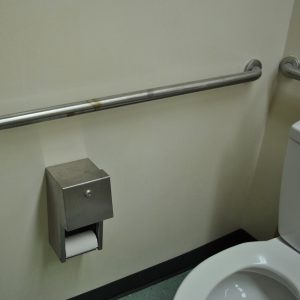
Properly installed handrails in bathrooms and other high traffic areas can greatly reduce the risk of falling. (Photo source: Samantha Kennedy)
Most fall injuries occur in the home. We think of our homes as our safe space and sanctuary, often overlooking potential dangers. Here are six common hazards that occur in the home that can contribute to an increased risk of falling.
Clutter. Items that block or limit walkways in the home can be tripping hazards. Having to navigate around excess furniture or boxes can be difficult for someone with limited mobility. Clear out the clutter and keep walkways free of extraneous items. Wide open hallways and other spaces in the home will reduce potential tripping hazards.
Rugs. Rugs large and small can be tripping hazards. People can catch their toes underneath a rug’s edge or the rug itself can slip out from under them, causing a fall. Remove any rugs that are not necessary, such as rugs set out strictly for decoration. Apply slip-resistant backing to rugs to keep them from sliding across the floor.
Lighting. Dim lighting can make it difficult to see potential tripping hazards. Install brighter lights, especially in walkways and stairwells. Use nightlights in hallways and bathrooms to help navigate more easily at night.
Storage. Many falls occur when people are trying to reach items that are stored out-of-reach. Rearrange items, especially those used most often, in cabinets and on shelves so they can be reached easily without needing a step ladder.
Handrails. The lack of handrails or handrails that are broken or installed incorrectly can contribute to falls. The extra support and stability provided by handrails is vital, especially for those with limited mobility. Installing proper handrails in the bathroom (including the toilet and shower) and on stairs can greatly reduce the risk of falling.
Pets. Small pets can contribute to falls by inadvertently acting as a tripping hazard. Be aware of where pets are and tread carefully around them. When walking a pet, keep them on a tight leash and do not let them wrap around feet or legs.
Another great way to help reduce the risk of falling is through exercise. Strength and balance exercises such as Tai Chi help improve leg strength, balance, and flexibility. Some people also may benefit from calcium and vitamin D supplements, which can improve bone strength. Always consult a physician before taking any supplement.
Related articles:
Important Facts about Falls (CDC)
Fall Prevention (UF/IFAS Extension)
Extension classes are open to everyone regardless of race, creed, color, religion, age, disability, sex, sexual orientation, marital status, national origin, political opinions or affiliations.

by Judy Corbus | Dec 3, 2018

Photo source: UF/IFAS Northwest District
The holiday season is here and, with it, many colorful decorations, delicious treats, and fun events. There also are hidden dangers that can mar this special time of year if we aren’t careful. Follow these twelve tips for a safe holiday celebration:
- To reduce fire risk, do not connect more than three strings of incandescent lights. Follow label guidelines for stringing together LED lights. Check lights for frayed or exposed wires, loose connections, and broken sockets and replace as needed.
- Place candles on stable surfaces away from trees, curtains, and other flammable items and out of reach of children. Never leave burning candles unattended or sleep in a room with a lit candle. Consider using battery-operated candles.
- Use caution when decorating with “angel hair” and artificial snow. Angel hair is made from spun glass and can irritate eyes and skin; always wear gloves when handling or use non-flammable cotton instead. Artificial snow can irritate your lungs if inhaled; follow package directions carefully.
- Keep kids and pets in mind when decorating the tree. Place breakable ornaments or ones with metal hooks near the top out of reach of little hands, playful paws, and wagging tails.
- Use a sturdy step ladder, not chairs or other furniture, to reach high places. Get someone to “spot” you and assist with handing or taking items.
- If you use a fireplace, have your chimney checked and cleaned at least once a year by a certified chimney sweep. Cleaning removes soot and other by-products that can lead to chimney fires and carbon monoxide intrusion into your living space.
- Use special care when giving toys that use coin lithium batteries to children. Older children’s devices with these batteries can be enticing to young children. Ingestion of button batteries can cause serious injury or death. Lock away spare batteries and closely supervise young children around products with button batteries. In case of ingestion, contact the 24-hour National Battery Ingestion Hotline, (800) 498-8666.
- If you want to fry a turkey, consider using an oil-less turkey fryer or purchase a fried turkey from a professional establishment. The Consumer Product Safety Commission reports that since 2002, there have been 168 turkey-related fires, burns, explosions, or carbon monoxide poisoning incidents, 672 injuries, and $8 million in property damage. Don’t add to the statistic count!
- Use a food thermometer to ensure meat reaches a safe internal temperature. Click here for a convenient temperature chart.
- Refrigerate food within two hours. Cut leftover meat in small pieces and store foods in shallow containers so they will chill quickly. Use leftovers within four days or freeze or discard.
- Reheat sauces, soups, and gravies to a rolling boil before serving.
- Wash your hands frequently with soap and warm water to reduce your risk of illness.
Have a happy, healthy holiday season!
Sources:
National Safety Council
Chimney Safety Institute of America
Electrical Safety Foundation International
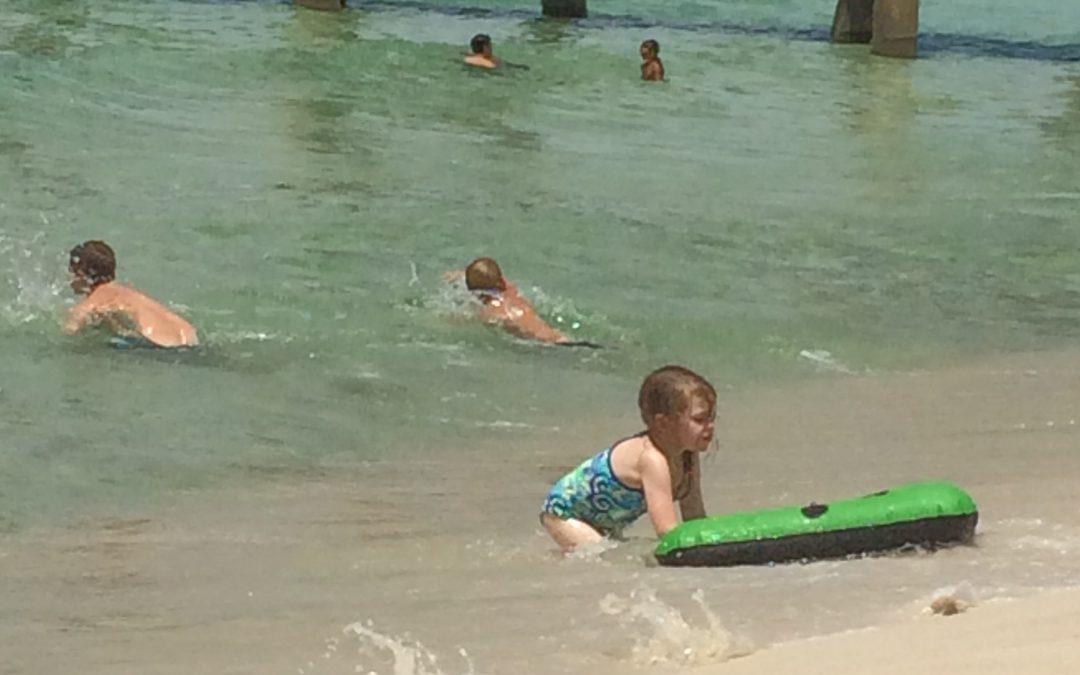
by Melanie Taylor | Jun 23, 2018
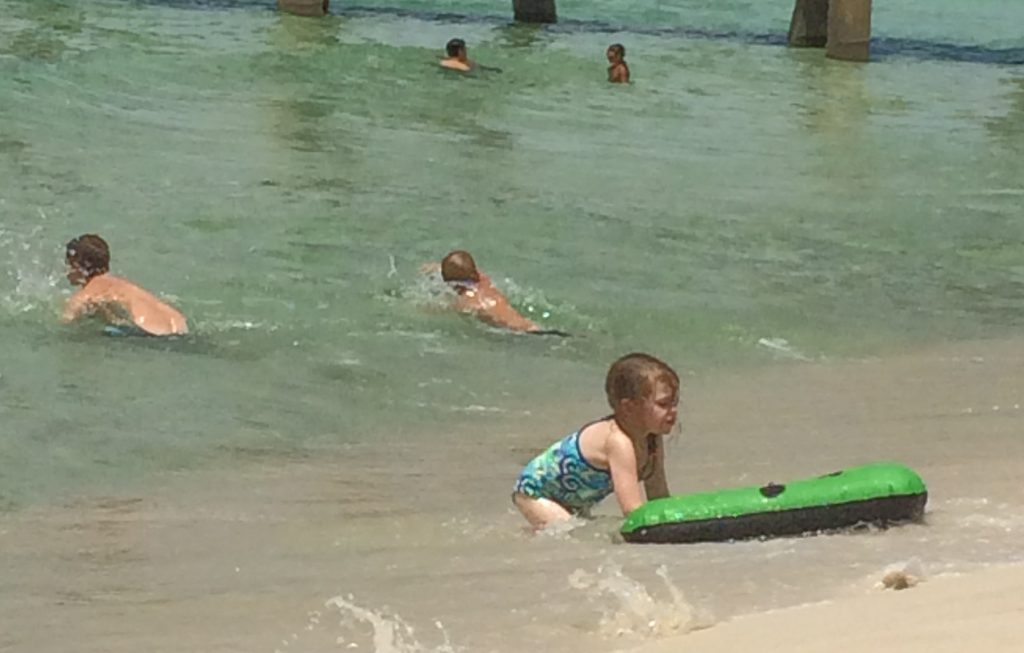
Always supervise children closely around water.
Photo credit: Marie Arick
Summer is here! As the long, hot days of summer move forward there are many things to consider when it comes to children and water safety. Each summer we hear of tragic incidents of children drowning in pools, spas, and other bodies of water. These tragedies may be avoided by following a few simple tips to keep your child safe while letting them enjoy their summer break.
The U.S. Consumer Product Safety Commission (CPSC) is the agency charged with protecting the public from unreasonable risks of injury or death from thousands of types of consumer products under the agency’s jurisdiction. In addition to Pool and Spa Safety, the CPSC is committed to protecting consumers and families from products that pose a fire, electrical, chemical, or mechanical hazard. CPSC launched the campaign, PoolSafely.gov, which provides Pool Safely: Simple Steps to Save Lives, a national public education campaign to reduce childhood drownings, submersion injuries and entrapments. Review these tips below.
Tips from PoolSafely.gov and CPSC:
- Never leave a child unattended in or near water.
It is recommended to designate an official “Water Watcher”, this is an adult assigned with supervising the children in the water. This should be their only task – they should not be reading, texting or playing games on their phone. Have a phone close by at all times, in case you need to call for help, and if a child is missing, check the pool first. Even when a lifeguard is present, parents and caregivers should still take the responsibility of being a designated “Water Watcher”. When the lifeguard chair is empty, the other lifeguards may not be able to see the entire pool and when lifeguards are sitting in low chairs; other people in the pool can block their view.
- Teach children how to swim.
Swimming is fun, great exercise and it is a lifesaving skill, so why would you not instill this skill in your child? Be sure to enroll children in swimming lessons – the earlier the better. A few swimming lessons may just save their life.
- Teach children to stay away from pool drains.
Show your children where the pool drain is located and remind them of the dangers of those drains. Remind them not to play or swim near drains or suction outlets, especially in spas and shallow pools, and never enter a pool or spa that has a loose, broken or missing drain cover. Sadly, children’s hair, limbs, jewelry or bathing suits, etc. can get stuck in a drain or suction opening. When enjoying time in a spa, be sure to locate the emergency vacuum shutoff before getting in the water.
- Ensure all pools and spas – both in your backyard and any public pool you may visit – have compliant drain covers.
The powerful suction from a pool or spa drain can even trap an adult, let alone a child. The Pool and Spa Safety Act is named after Virginia Graeme Baker, a child that tragically died from drowning due to a suction entrapment from a faulty drain cover. Do to this act, it is now required by law that all public pools and spas must have drain grates or covers that meet safety standards to avoid incidents like the one that took Graeme’s life.
- Install proper barriers, covers and alarms on and around your pool and spa.
One of the biggest dangers with pools or spas is when they are left open without any proper fences, barriers, alarms and covers. Each of these can be lifesaving devices. A fence of at least four feet in height should surround the pool or spa on all sides and should not be made of a climbable material. The pool should only be accessible through a self-closing, self-latching gate. Teach children to never climb over a pool gate or fence. Always remove portable pool ladders when not in use, just so your child is not enticed to enter the water. It is also highly recommended to install a door alarm from the house to the pool area, and keep pool and spa covers in working order.
- Know how to perform CPR on children and adults.
CPR can be the reason a drowning victim survives. With all of the possible locations of CPR trainings, why not get CPR certified as an extra precaution in case there is a water emergency? CPR classes are available through many hospitals, community centers, or by contacting your local American Red Cross. Once certified, be sure to keep the certification up to date.
- Finally, take the Pledge!
Before heading to the water with your family, remember to take the Pool Safely Pledge. This online call to action is a reminder to stay safer around the water. This pledge for you and your child can be found at https://www.poolsafely.gov/pledge/. The pledge is supported by CPSC and the PoolSafely.gov initiative and Olympic swimmer Michael Phelp along with over 60,000 other pledge takers. Parents, you can also download coloring sheets and other fun PoolSafely.gov child friendly apps and songs.
With the large variety of water related summer activities available it does leave a chance for risky incidents. Some work and preparation ahead of time will make for a less anxious and more fun-filled summer. Planning for risk will lessen the high-risk stakes and make sure everyone is prepared in case of an emergency. So remember, Simple Steps Save Lives. Enjoy a safe, fun, and water filled time this summer!
Resources: For more information be sure to visit Pool Safely: Simple Steps Save Lives – https://www.poolsafely.gov
by Heidi Copeland | Mar 24, 2015
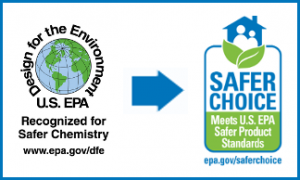
On March 4, 2015 the EPA (Environmental Protection Agency) unveiled a new Safer Choice label/logo, which makes it easier to find household cleaners and other home products that are safer, more environmentally friendly—and still get the job done!
Finding cleaning and other products that are safer for you, your family, and the environment should be easy. Products with the Safer Choice label help consumers and commercial buyers identify and select products with safer chemical ingredients, without sacrificing quality or performance.
Safer Choice labels can be found on laundry products, all-purpose cleaners, car care products, dishwashing products, tub and tile products as well as floor care products. Some of these products will also carry a “Fragrance-free” notation.
The Safer Choice standard, formerly known as DfE’s – Standard for Safer Products (or the “DfE Standard”) identifies that the products and their ingredients met the Safer Choice label/logo requirement.
Safer Choice used the technical expertise of its workgroup (EPA scientists, formulators and even environmentalists to identify ingredients with the lowest hazard profile). While many of us take cleaning products for granted most are a highly scientific formula of ingredients, each with its distinct functional properties. Take dish washing liquid for example. Many of these products contain surfactants that aid in cleaning by reducing surface tension, solvents that dissolve or suspend materials, and chelating agents that reduce water hardness. Without the use of these ingredients we would probably complain about the effectiveness of the product.
A Safer Choice product contains the safest possible ingredients. Each ingredient has been screened for negative synergies (dangerous chemical combinations), potential human health effects, and environmental effects– based on the best available data. Safer Choice products will use ingredients with the lowest hazard in their functional class while still be high-performing.
Only products who have become Safer Choice partners can earn the right to display the Safer Choice product label/logo. Products using the Safer Choice label/logo have invested heavily in research, development and reformulation to ensure that their ingredients and finished product align at the green end of the health and environmental spectrum, while maintaining product performance.
Please note, the use of the Safer Choice label/logo does not constitute endorsement from the Environmental Protection Agency (EPA). It does however, recognize the company using the Safer Choice label/logo has gone through rigorous screening and uses ingredients with more positive human health and environmental characteristics than conventional products of the same type.
For more information see:
http://www2.epa.gov/saferchoice/safer-choice-standard
Heidi Copeland
Extension Agent II
Have a question? Contact the University of Florida IFAS – Leon County Extension office at 606-5203, weekdays 8 a.m. to noon or 1 to 5 p.m.
University of Florida IFAS – Leon County Extension is an Equal Employment Opportunity/Affirmative Action Employer authorized to provide research, educational information and other services only to individuals and institutions that function without regard to race, color, gender, disability or national origin.
by Heidi Copeland | Mar 24, 2015
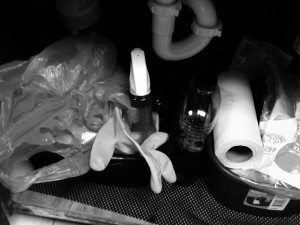
Spring cleaning of one’s home is a tradition dating back centuries that is tied to the vernal equinox – the first day of spring. At the spring equinox, days are approximately 12 hours long with day length increasing as the season progresses. In many cultures this longer, lighter, warmer day is often a cause for celebration! And who could even think about celebrating a longer, lovelier day without a clean home?
The kitchen is a great place to start! You can protect yourself by preventing the spread of germs where food is prepared. However, the terms clean, sanitize and disinfect are often used interchangeably which can cause confusion. Best practices based upon current research state that cleaning and sanitizing is multi-step process. And even though surfaces look visibly clean, they may still be contaminated with microorganisms (infectious fungi, bacteria and viruses).
Cleaning is the removal of dirt from food preparation surfaces. These can be counters, cutting boards, dishes knives, utensils pots and pans – even your refrigerator.
- Wash surface with soap and warm water
- Rinse with clean water
- Air dry or dry with a clean disposable towel
Sanitizing reduces germs on inanimate – nonliving surfaces.
- Wash surface with soap and warm water using appropriate cleaning agents and equipment. Detergents can penetrate soil quickly whereas solvent, acid or abrasive cleaners may be needed for deep cleaning. The friction of cleaning — often with soap and water — removes most surface germs, which is adequate for most household surfaces.
- Rinse with clean water
- Air dry or dry with a clean disposable towel
Disinfecting destroys or inactivates most germs on inanimate surfaces.
- Wash surface with soap and warm water
- Rinse with clean water
- Disinfecting is not appropriate in all cases. However, it’s a good idea to get in the routine of disinfecting countertops, door and cabinet handles, and sink and sink faucets as these places are used frequently- think where dirt and guck can collect!
- Air dry or dry with a clean disposable towel
Also remember to disinfect dishcloths – often. Launder dishcloths frequently using the hot water cycle of the washing machine. Be sure to dry cloths thoroughly. These items can harbor bacteria and when wet, promote bacterial growth. Also, consider using disposable towels to clean up surfaces.
And don’t forget your kitchen sink drain and disposal. Once or twice a week clean, sanitize and disinfect.
Bathroom surfaces can be of critical concern. Surfaces closest to the toilet bowl – seat, cistern and nearby walls and shelving are most affected. When cleaning and disinfecting bathroom surfaces it is important to understand fecal matter is especially a huge matter of concern!
Then there are our general housekeeping surfaces, floors, walls, and furniture, which are low–touch surfaces that require low-level of disinfections. Cleaning these surfaces frequently with a bit of detergent or a low-level disinfectant designed for general housekeeping can decrease the level of contamination. General procedures should be followed. Remove dirt form surfaces (dust, vacuum or sweep) sanitize or disinfect, allow surfaces to air dry.
Thorough cleaning of all surfaces is important to reduce the spread of pathogens. High-touch surfaces, surfaces that are handled frequently, throughout the day, by numerous people, need cleaning and disinfecting. These surfaces can include doorknobs, light switches, phones, keyboards etc. that can become contaminated by objects such an inadequately cleaned rag, sponges or even improperly washed hands.
Cleaning regularly prevents the build-up of materials that can carry pathogens and support their growth. Some pathogens, viruses especially, can have a long shelf life and can stay on surfaces if they are not properly cleaned, sanitized or disinfected.
Take a look at The University of Florida IFAS EDIS publication explaining the use of common household products to use effectively as sanitizers. Also remember, it is critical to read and follow the safety instructions on any product you use.
http://edis.ifas.ufl.edu/pdffiles/FY/FY128000.pdf
http://www2.epa.gov/saferchoice
Heidi Copeland Extension Agent II Family and Consumer Sciences
615 Paul Russell Road Tallahassee, FL 32301-7060 850/606-5203








